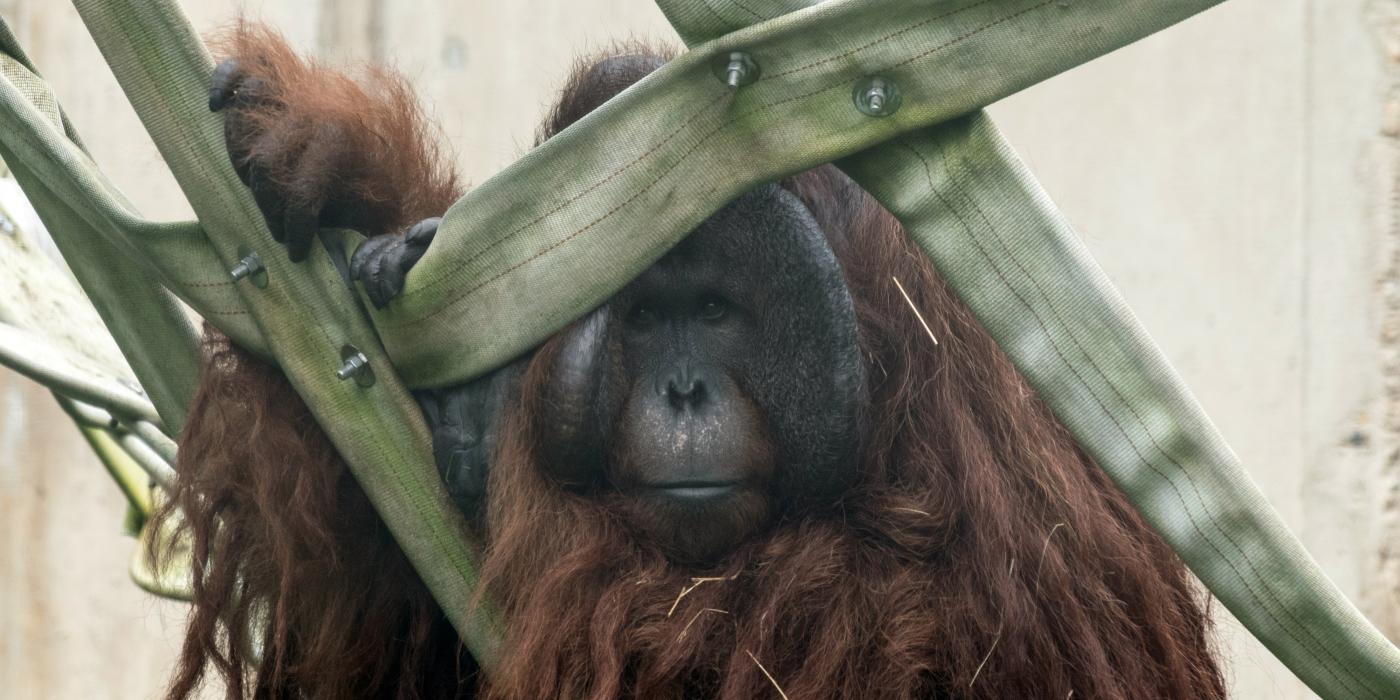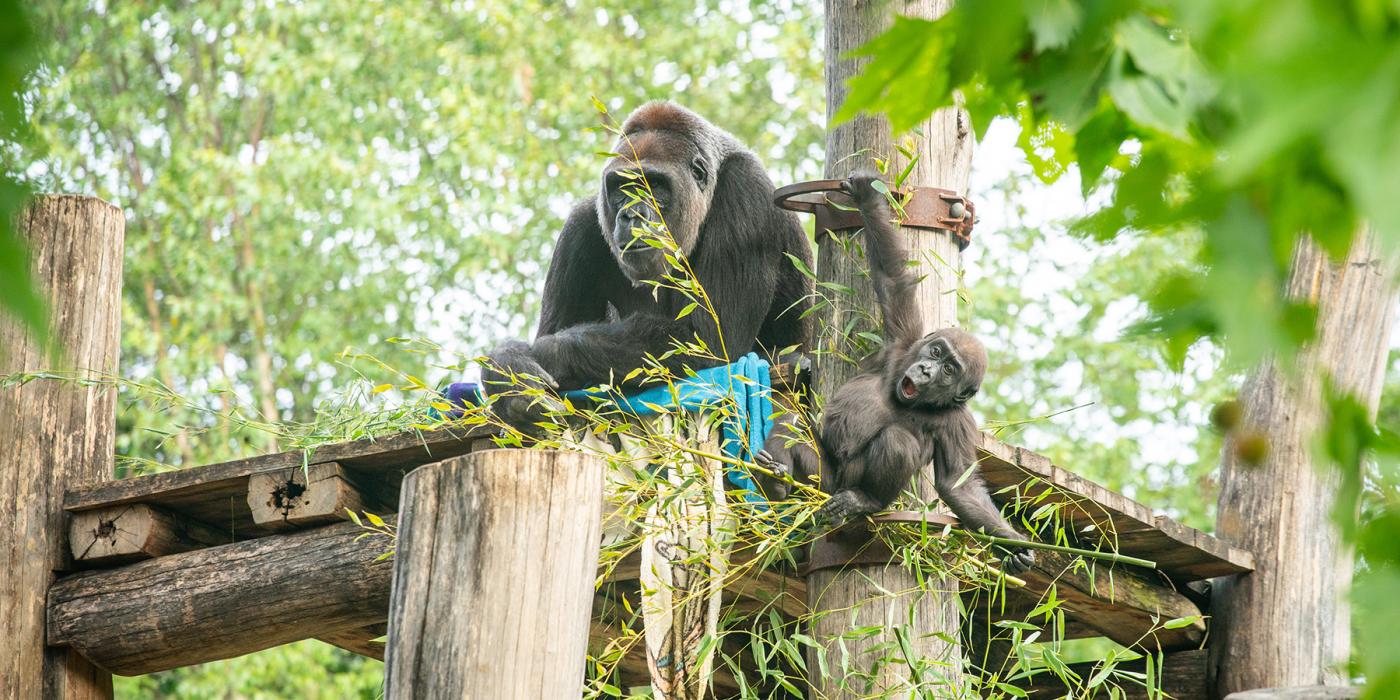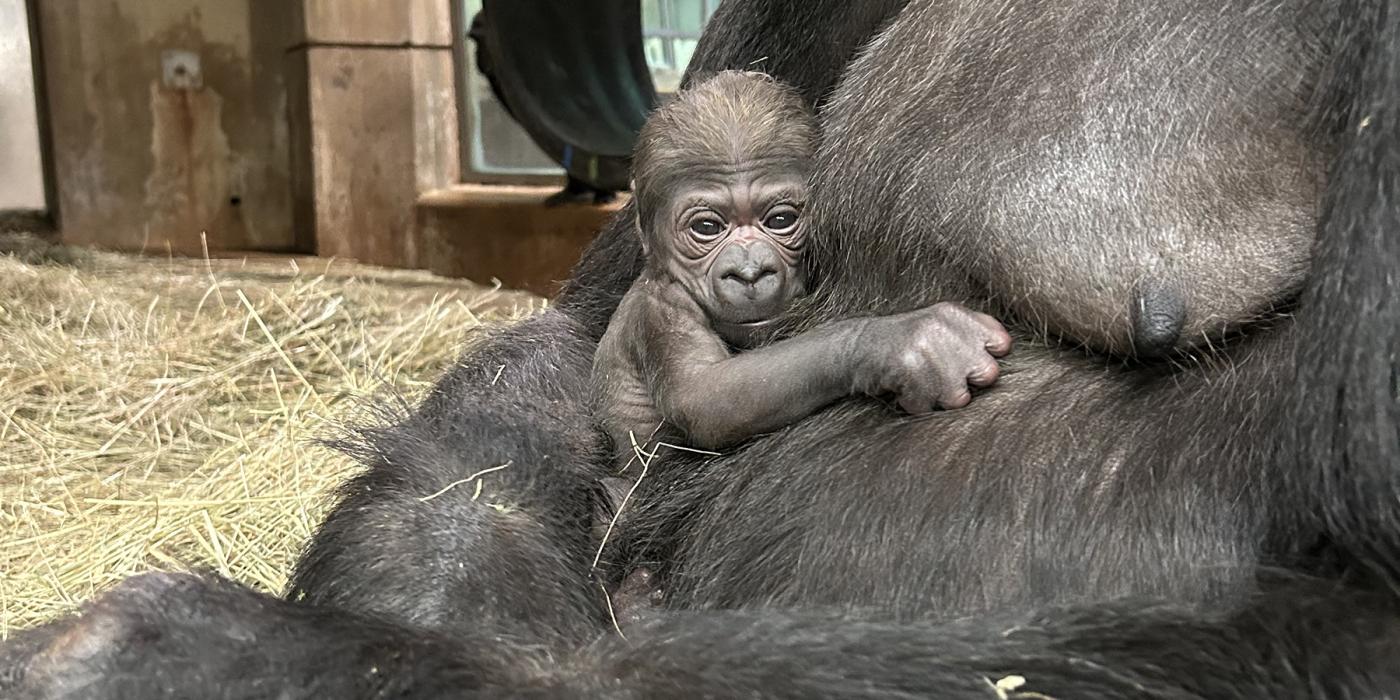How Long Are a Gibbon’s Arms? And More Gibbon Facts

Oct. 24 is International Gibbon Day, so take a few minutes to learn all about these acrobatic apes.
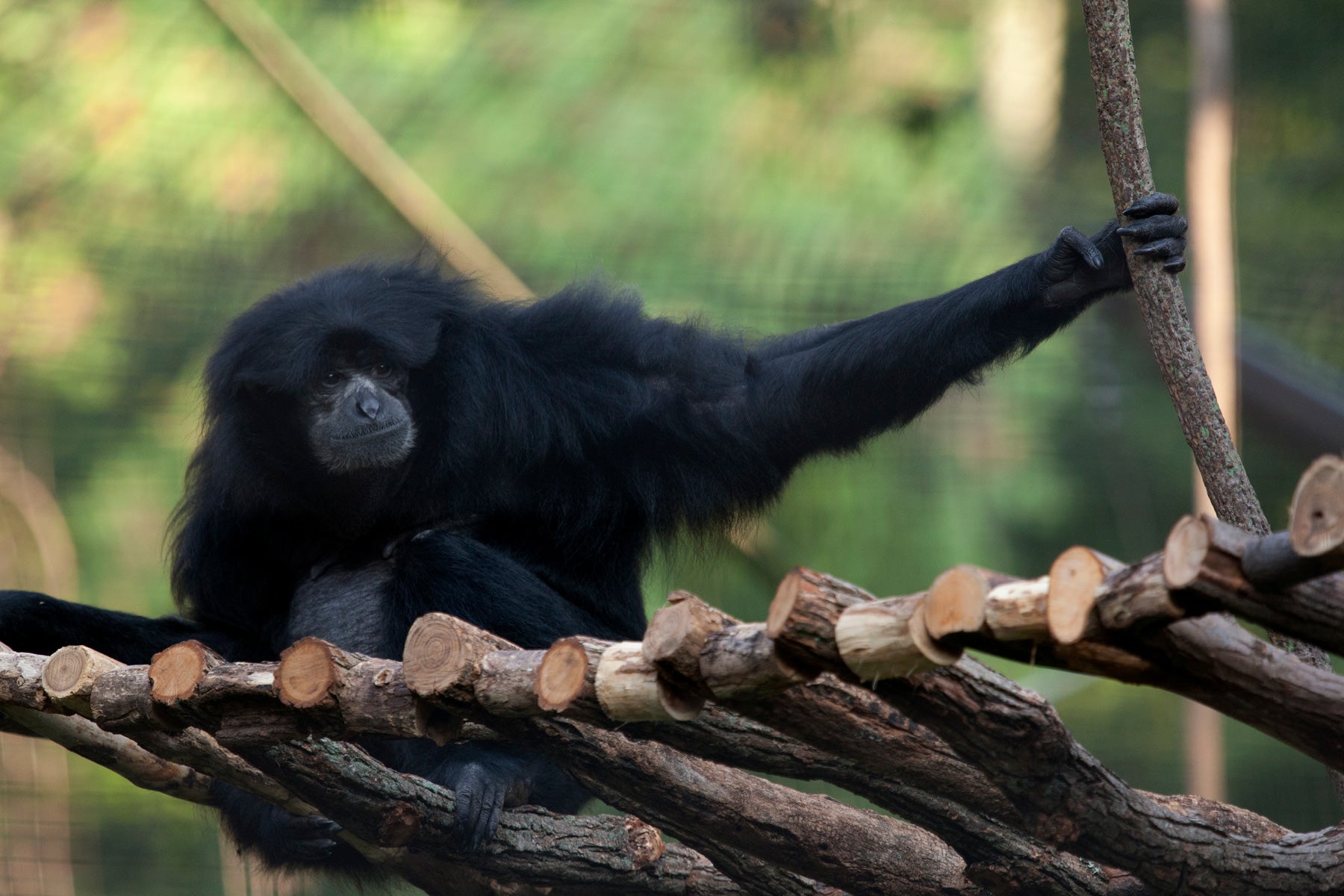
Are gibbons monkeys?
No, gibbons are apes. More specifically, they are classified as small apes, because (you guessed it) they are smaller than the great apes — gorillas, chimpanzees, bonobos, orangutans and humans.
Do gibbons have tails?
Gibbons do not have visible, external tails. One way to spot the difference between a monkey and an ape is to look for a tail. Most monkeys have visible tails, while apes do not. However, there are a few exceptions to this rule — such as the Sulawesi macaque, a monkey that has only a hidden, vestigial tail.
How many gibbon species are there?
There are more than a dozen recognized species of gibbons, divided into four genera: Hoolock (hoolock gibbons), Hylobates (hylobates), Symphalangus (siamangs) and Nomascus (crested gibbons). Siamangs are the largest gibbon species, with adults typically weighing between 23 and 30 pounds. Visitors to the Smithsonian’s National Zoo can see siamangs at the Gibbon Ridge Exhibit.
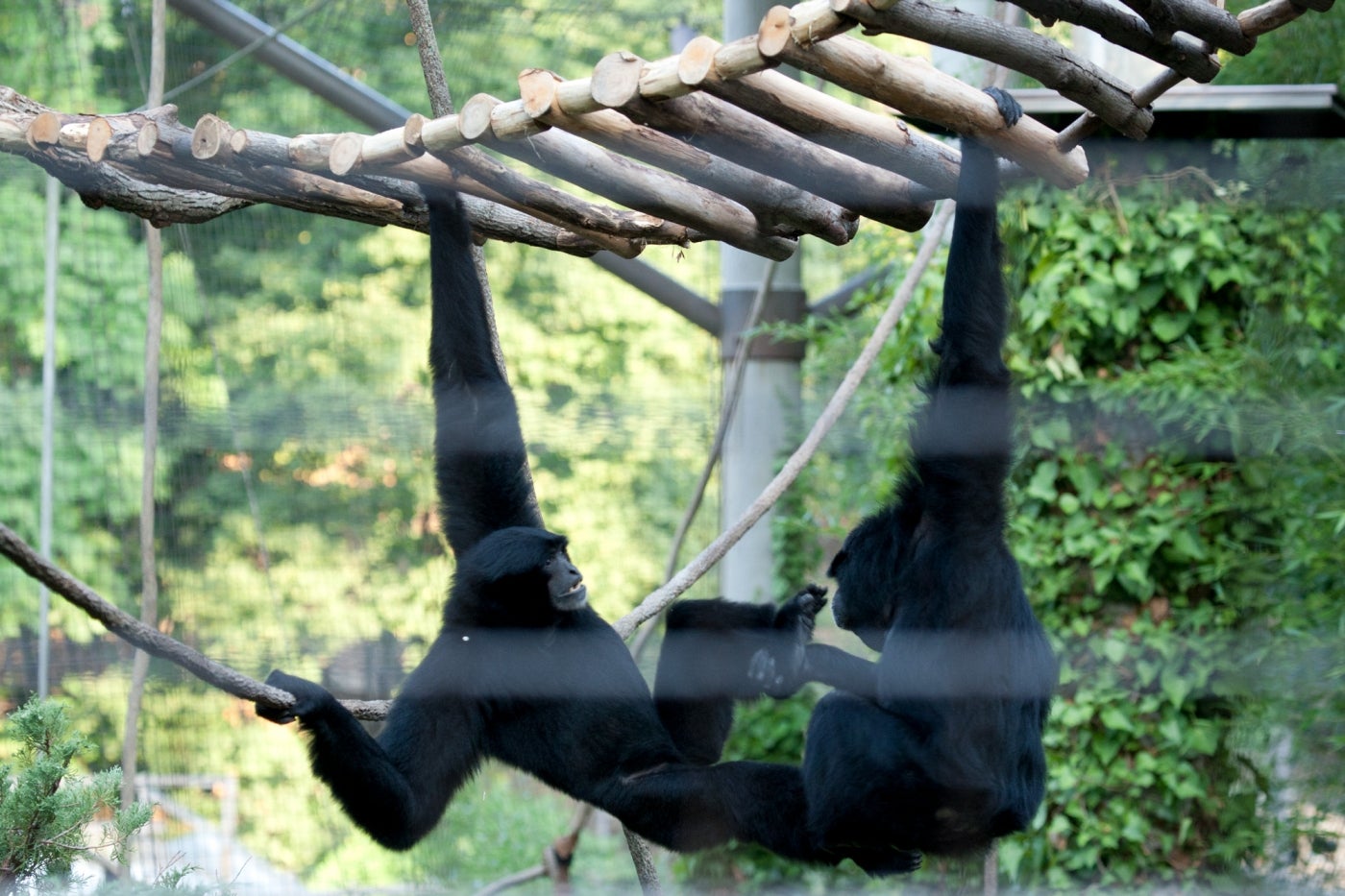
How long are a gibbon’s arms?
On average, a gibbon’s arms are 1.5 times longer than its legs, and siamang gibbons can have arm spans up to 5 feet wide. Primate keeper Carly Hornberger did the math. According to her calculations, if humans had similar proportions, a 5-foot-4-inch woman would have an arm span of about 10 feet, 7 inches!
Are gibbons strong?
Gibbons are not as strong as their great ape cousins, but their powerful arms, along with hook-like hands and specialized shoulder joints, help them swing from branch to branch through the jungle. This type of movement is called brachiation. It allows gibbons to reach average speeds of about 35 miles per hour and propel themselves from one tree to another over distances of up to 50 feet.
Gibbons don’t live in large family groups or spend much time on the ground, so physical strength is not their first line of defense. However, they do have large, dagger-like canine teeth that can cause serious damage.
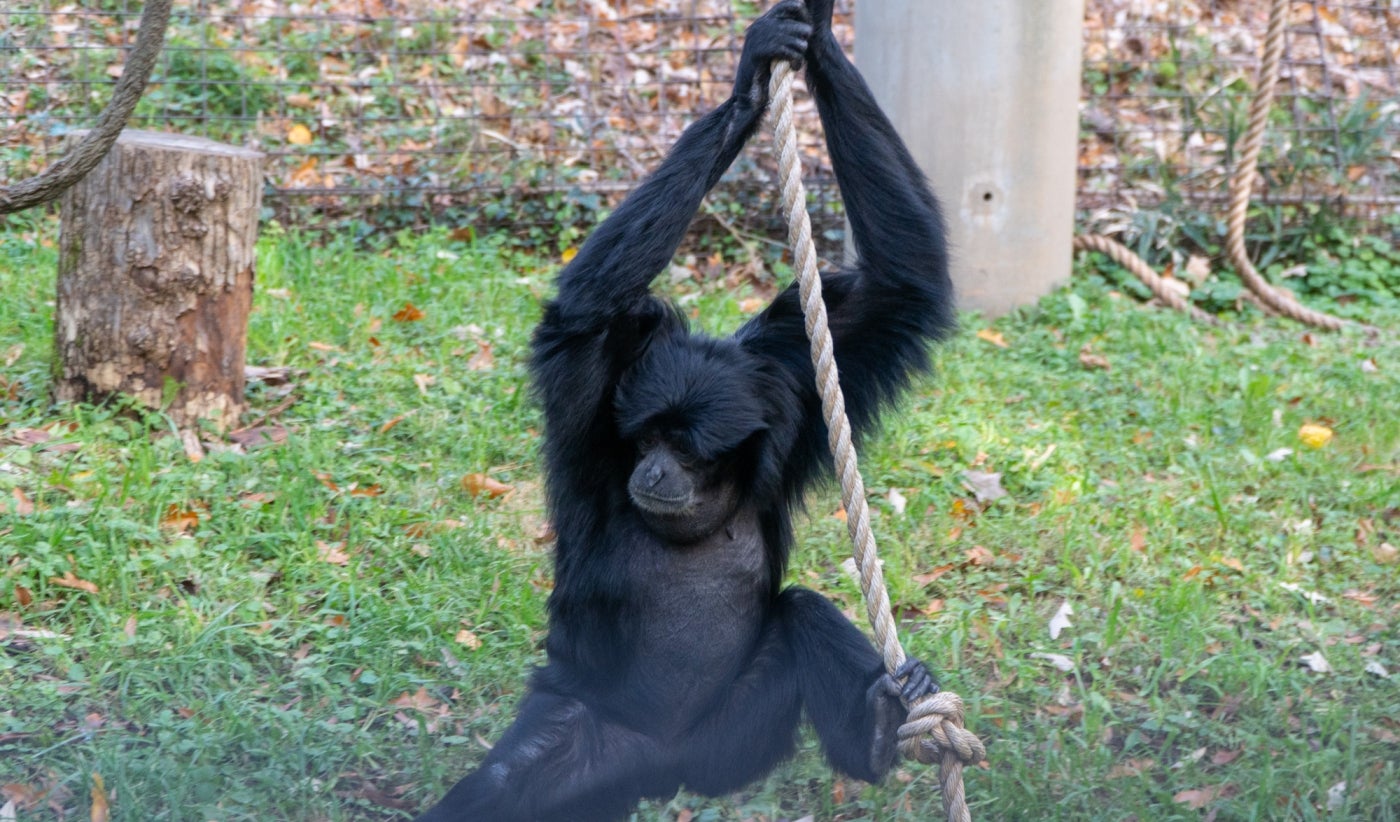
Where do gibbons live in the wild?
Gibbons are found in the rainforests of southern Asia, where they spend most of their time in trees. When gibbons do visit the ground, they tend to walk on two feet and may even hoist their long arms over their heads for balance.
What do gibbons eat?
Gibbons are frugivores, meaning they prefer to eat fruit. When fruit is scarce, they also eat leaves, flowers, shoots, and the occasional egg or insect.
The Zoo’s gibbons — siamangs named Ronnie and Bradley — eat leafy greens, broccoli, green peppers, papayas, bananas and primate chow. They like to place mealworms on each other, and then groom them off to eat. They also enjoy a hard-boiled egg once a week and receive pasta, a favorite treat, as a reward for participating in training sessions.
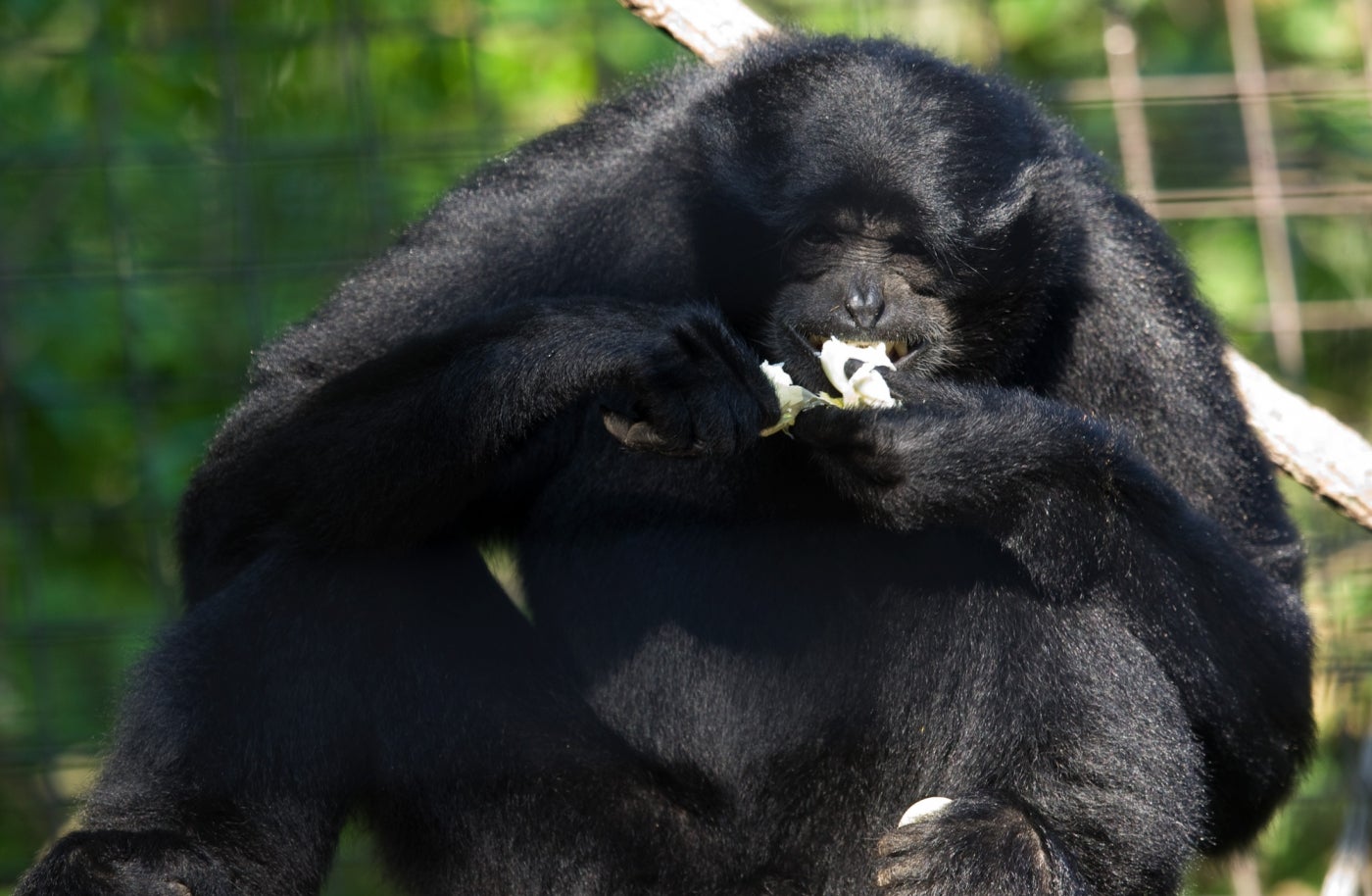
Are gibbons intelligent?
Yes! At the Zoo, keepers conduct daily training sessions with the gibbons. They may not learn as quickly as gorillas and orangutans, but they can still pick up new behaviors. Bradley is trained to participate in his own care and voluntarily lets keepers give him injections, file his nails, take his temperature and check his heart rate.
While there are no documented cases of gibbons exhibiting true tool-use like great apes, gibbons are capable of object-directed problem solving. In other words, they can solve simple puzzles. Ronnie, for example, figured out how to get treats out of an enrichment toy by unscrewing the base. There are few studies on gibbon intelligence, so researchers have a lot more to learn.
Do gibbons have any predators?
Leopards, large snakes, and big birds of prey will eat gibbons … if they can catch these arboreal acrobats. Predators may not actively hunt gibbons, because they are not easy prey.
Why do gibbons howl (or “sing”)?
Gibbons defend their territories by making loud calls that can echo for miles. They compose complex songs of deep “booms,” blaring “wows” and barks, that start off slow and then grow faster.
Siamangs, the largest gibbons, have throat pouches that inflate to amplify their calls. Their throat sacs can expand to about the size of a grapefruit! Listen to their calls:
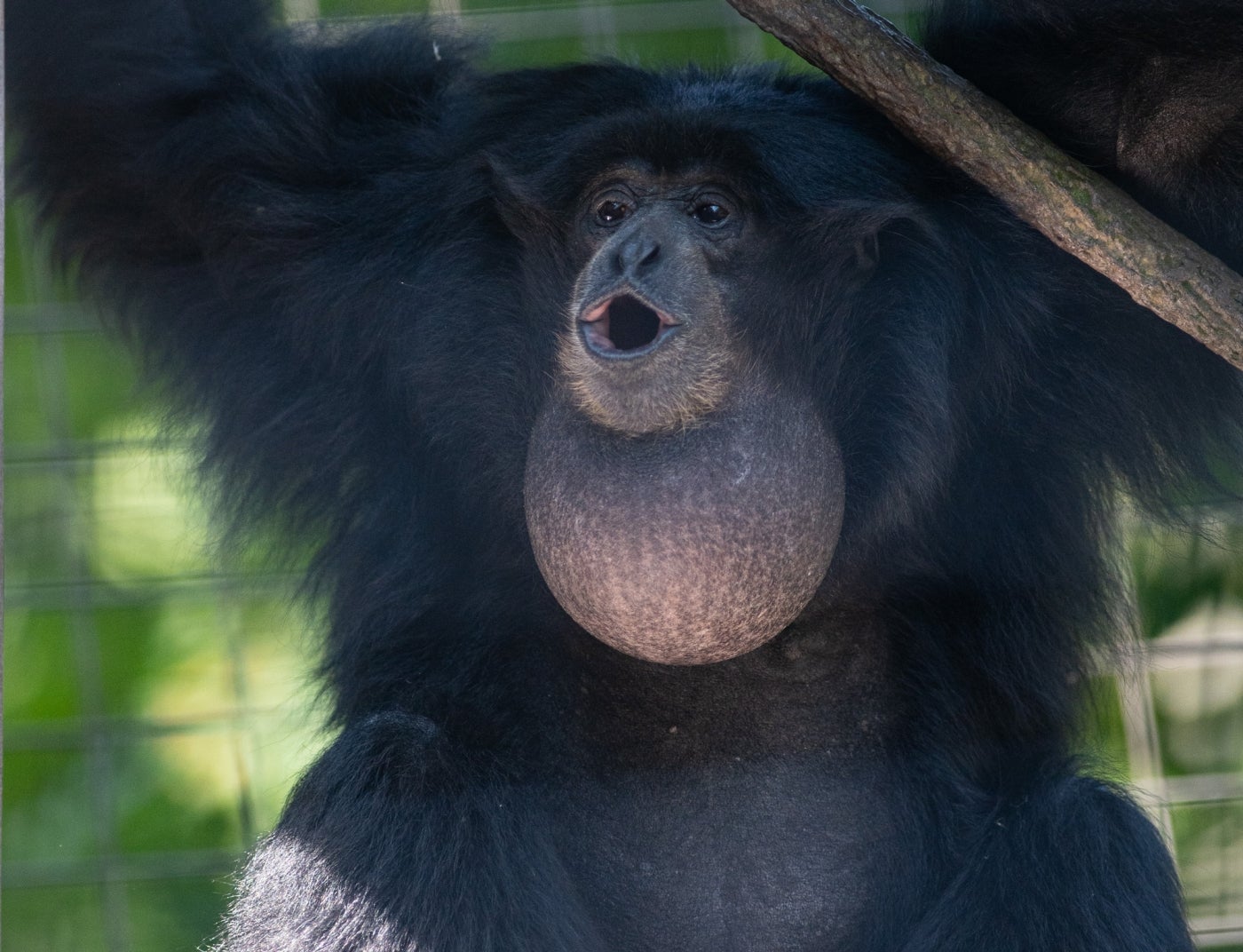
Do gibbons mate for life?
Most gibbons are pair-bonded and stay with the same partner for many years. Gibbons typically live in family groups made up of a male and female adult pair and one to three of their offspring, but group composition can vary widely across gibbon species. Parents usually share responsibility for their family group. Females often gather food, and males help care for their young.
Do gibbons groom each other?
Like other apes, gibbons spend a lot of time grooming each other. Grooming is not only important for hygiene – it’s also about bonding and displaying dominance! A social group’s more dominant gibbons receive more grooming (and spend less time grooming others).
Are gibbons endangered?
Yes, most gibbons are classified as endangered or critically endangered. Habitat loss poses one of the most serious threats to their survival, especially as trees are harvested for timber or cleared for farming (particularly palm oil). Poaching and the illegal pet trade also contribute to their decline.
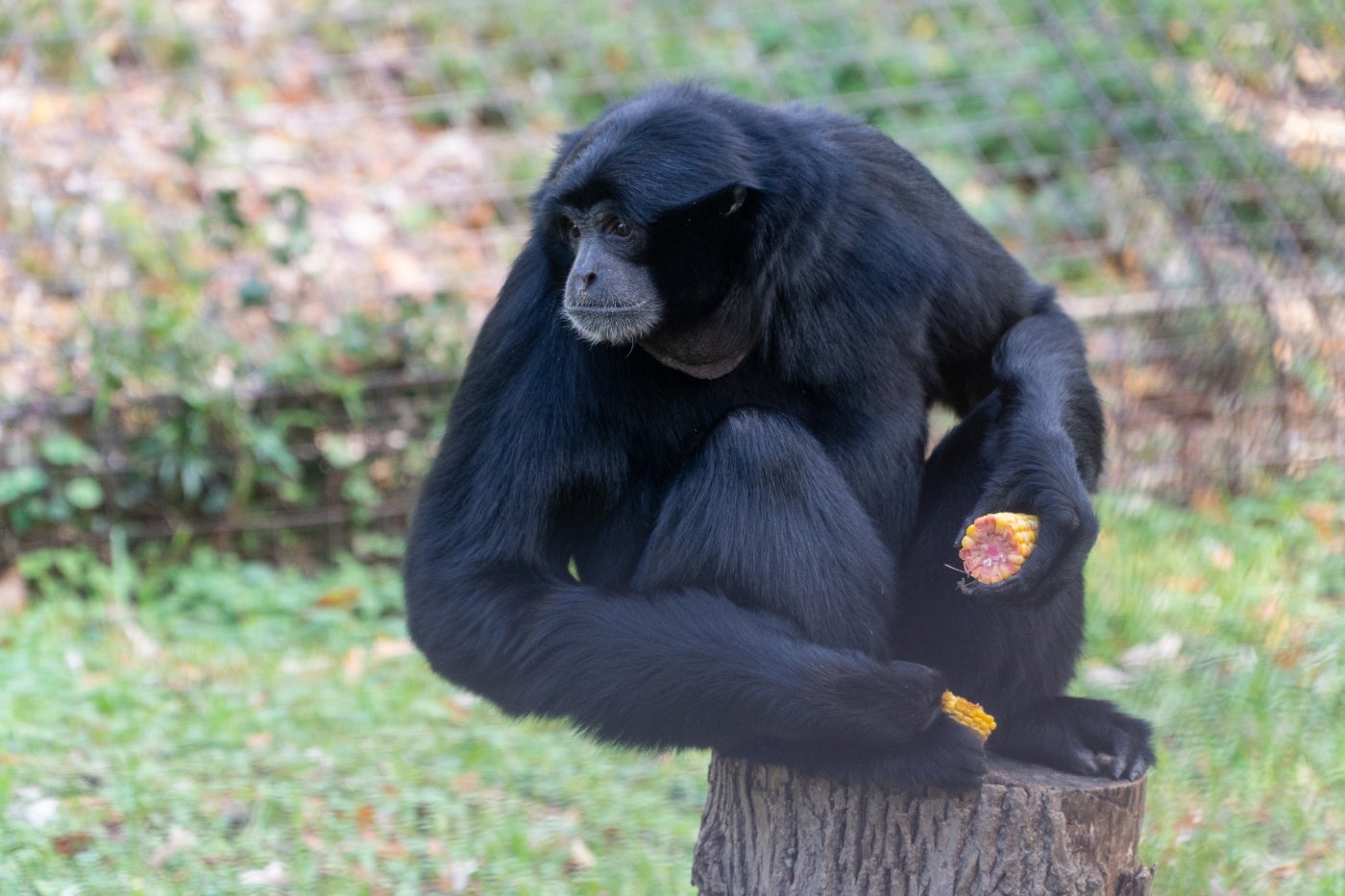
How can I help gibbons?
Gibbons are one of the most threatened primate species, but you can help. Reduce, reuse, repurpose and recycle single-use goods whenever possible. When shopping for items that contain wood or palm oil, choose products that are sustainably sourced. These actions can help conserve natural resources and protect habitats around the world.
If you’re traveling to an area where gibbons live, remember to practice ecotourism by being an advocate for the environment. Support, visit or volunteer with organizations that protect wildlife during your travels, and remember to shop smart, too. Avoid buying animals or animal products that could support poaching and the illegal wildlife trade.
Finally, share what you have learned with your friends and family. Raising awareness about gibbons and the threats they face can lead to greater protection for these incredible apes.
